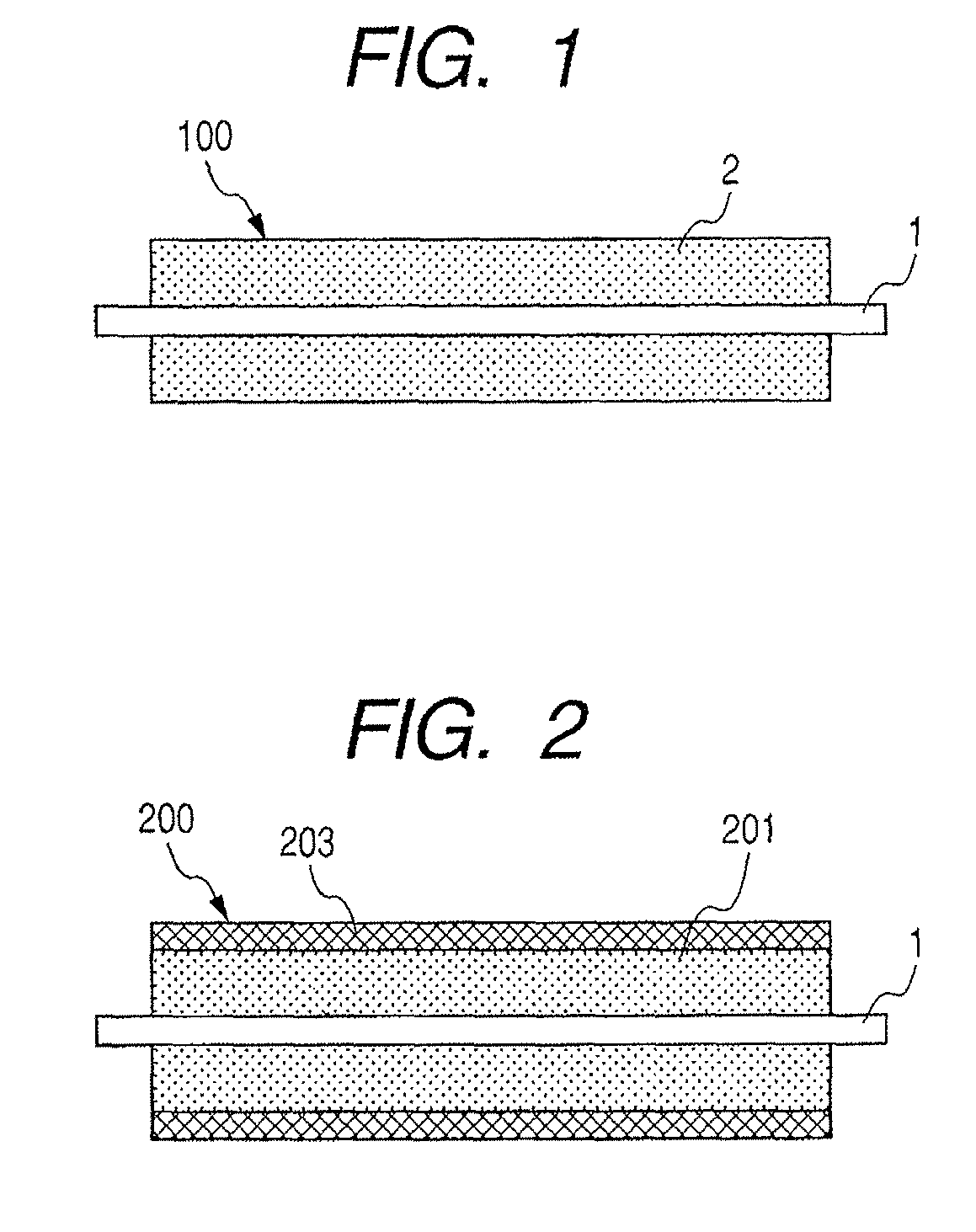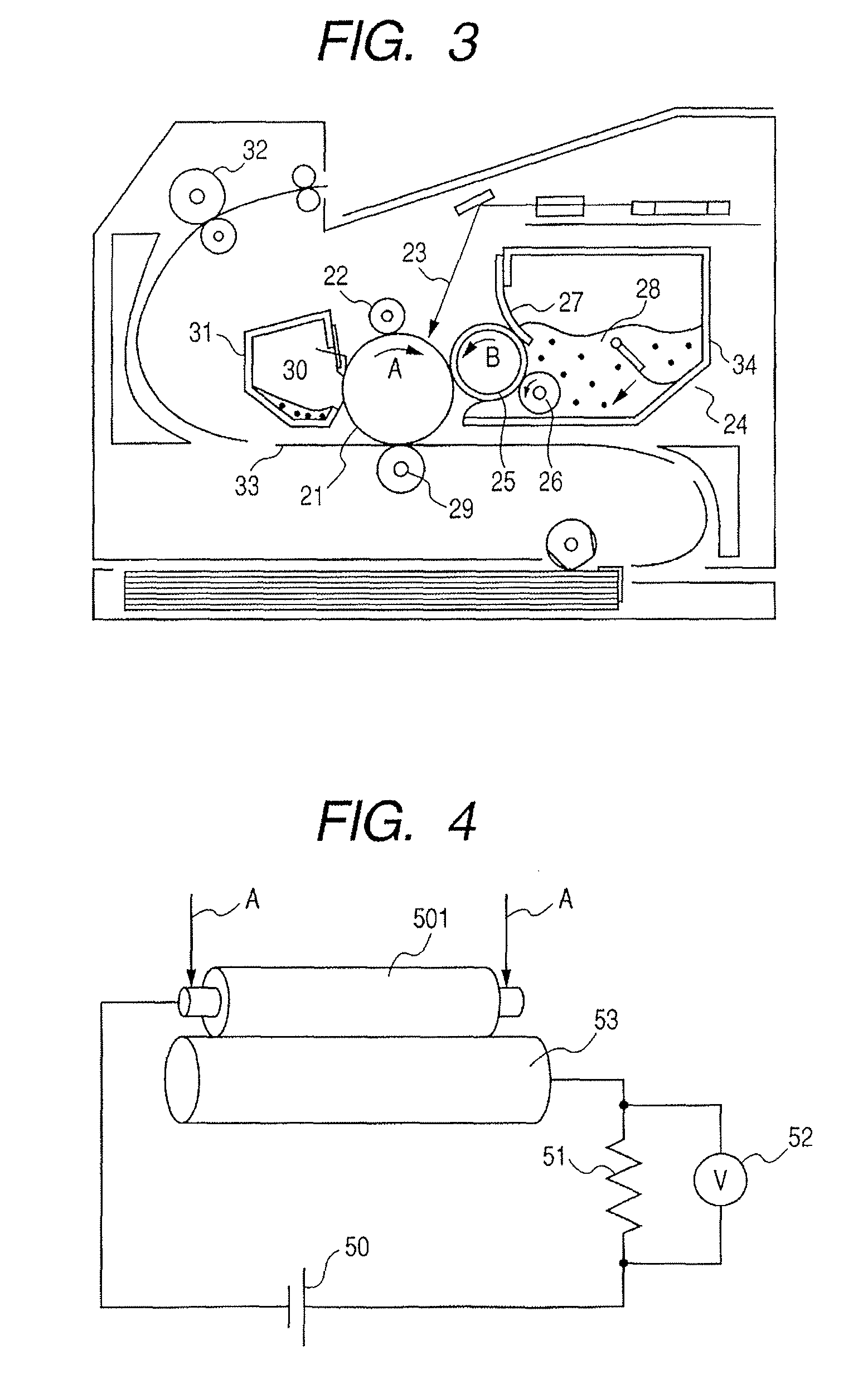Developing roller, process for its production, developing assembly and image forming apparatus
a technology of developing rollers and rollers, which is applied in the direction of shafts, bearings, instruments, etc., can solve problems such as faulty images coming from such adhesion, and achieve the effect of high reliability
- Summary
- Abstract
- Description
- Claims
- Application Information
AI Technical Summary
Benefits of technology
Problems solved by technology
Method used
Image
Examples
example 1
[0108]A mandrel (shaft member) of 8 mm in outer diameter was placed in a cylindrical mold of 16 mm in inner diameter in such a way that they were symmetrical, and a liquid conductive silicone rubber (a product available from Dow Corning Toray Silicone Co., Ltd.; Asker-C hardness: 45 degrees; volume resistivity: 1×107 Ωcm) was casted thereinto as a material for forming an elastic layer. After it was casted thereinto, the mold was put into a 130° C. oven to heat it for 20 minutes. After demolding, the molded product was subjected to secondary vulcanization in a 200° C. oven to form an elastic layer 201 of 4 mm in thickness on the peripheral surface of the mandrel.
[0109]Next, a fluid mixture of the following raw materials was prepared.
[0110]
(by mass)Alcohol (1)100partsAlcohol (3)3.1partsAlcohol (5)2partsIsocyanate C2521 (available from Nippon Polyurethane125partsIndustry Co., Ltd.; solid content: 65%)
[0111]To the fluid raw-material mixture obtained, methyl ethyl ketone (MEK) was added ...
PUM
 Login to View More
Login to View More Abstract
Description
Claims
Application Information
 Login to View More
Login to View More - R&D
- Intellectual Property
- Life Sciences
- Materials
- Tech Scout
- Unparalleled Data Quality
- Higher Quality Content
- 60% Fewer Hallucinations
Browse by: Latest US Patents, China's latest patents, Technical Efficacy Thesaurus, Application Domain, Technology Topic, Popular Technical Reports.
© 2025 PatSnap. All rights reserved.Legal|Privacy policy|Modern Slavery Act Transparency Statement|Sitemap|About US| Contact US: help@patsnap.com



